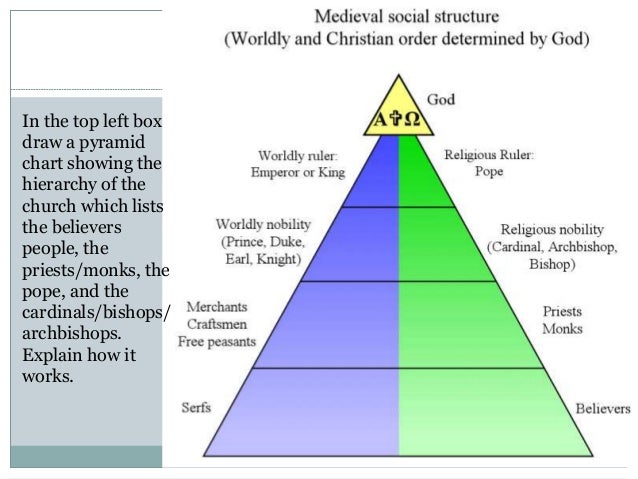

The modern concept of prices and wages as pragmatic devices for clearing markets and allocating resources, implying no moral judgment, came much later. Supply and demand were morally irrelevant. Prices and wages expressed a moral judgment of worth. These payments were incorporated into customary law, and did not fluctuate. Lords also began to lease out some of their lands for fixed money payments.
#End of feudalism chart free
The most significant change was the substitution of a fixed money payment for the serf’s labour obligation, leaving him free to work full-time on his own strips. They often resisted change because they believed that the cost outweighed the benefit. Any deviation from the law reduced the law’s authority, so the serfs tended to weigh the immediate benefit of a deviation against the longer term cost of the erosion of the law. The customary law that governed the manors was the serfs’ protection from overbearing lords. The rise of commerce deepened the markets and made money trades increasingly common, but feudalism was slow to respond to these changes. These trends continued through to the end of the 12th century, by which time little unsettled land remained.įeudalism had been designed for a society in which only local markets existed and in which money transactions were relatively rare. The settlement of frontier lands led to strengthening commerce, the growth of cities (which tended to develop along trade routes), and increasingly specialized production. Northern Europe’s demand for these goods rose as it became wealthier and more populous. The Italian traders exchanged timber, iron, and wood and metal manufactured products for the luxury goods that the Arab traders had purchased in the lands abutting the Indian Ocean: spices, perfumes, ivory, silk. The latter network involved trade between Italian city states (especially Genoa, Venice, and Pisa) and the Arab world.

This trade network spread through northern Europe and eventually linked with the Mediterranean trade network. Each area sold its own goods in order to purchase the goods of the other areas. The older areas, where the population density was highest, tended to produce labour-intensive goods (such as woolen and linen cloth) rather than land-intensive goods.

The newly settled areas produced grain and other farm products. The frontier areas tended to exploit the forests: they produced timber, pitch, tar, and furs.
#End of feudalism chart professional
As the manors became more populous and less isolated, more goods were brought in and carried away by professional traders.ĭifferences in population density explain much of the additional trade. New manors were established in wilderness areas, and the older manors gradually absorbed the untamed lands that surrounded them. Northern Europe in 800 AD was sparsely populated, with an economy based on scattered manors that were nearly self-sufficient, but its population was slowly growing. Some of them followed the slow rhythms of the Middle Ages, while others were swift and dramatic.

They fell away only when major changes to the social environment made them thoroughly obsolete. Feudal institutions were governed by custom, making them resistant to change. Its institutions were well-suited to the conditions of the early middle ages: settlements that were small and scattered, but that provided some respite from the lawlessness that prevailed in the wilds between them markets that were limited, local, and dominated by barter ( here). Based on Douglass North and Robert Thomas, The Rise of the Western World (Cambridge, 1973).Įuropean feudalism developed to train, equip, and support the knights who were the dominant instrument of war.


 0 kommentar(er)
0 kommentar(er)
